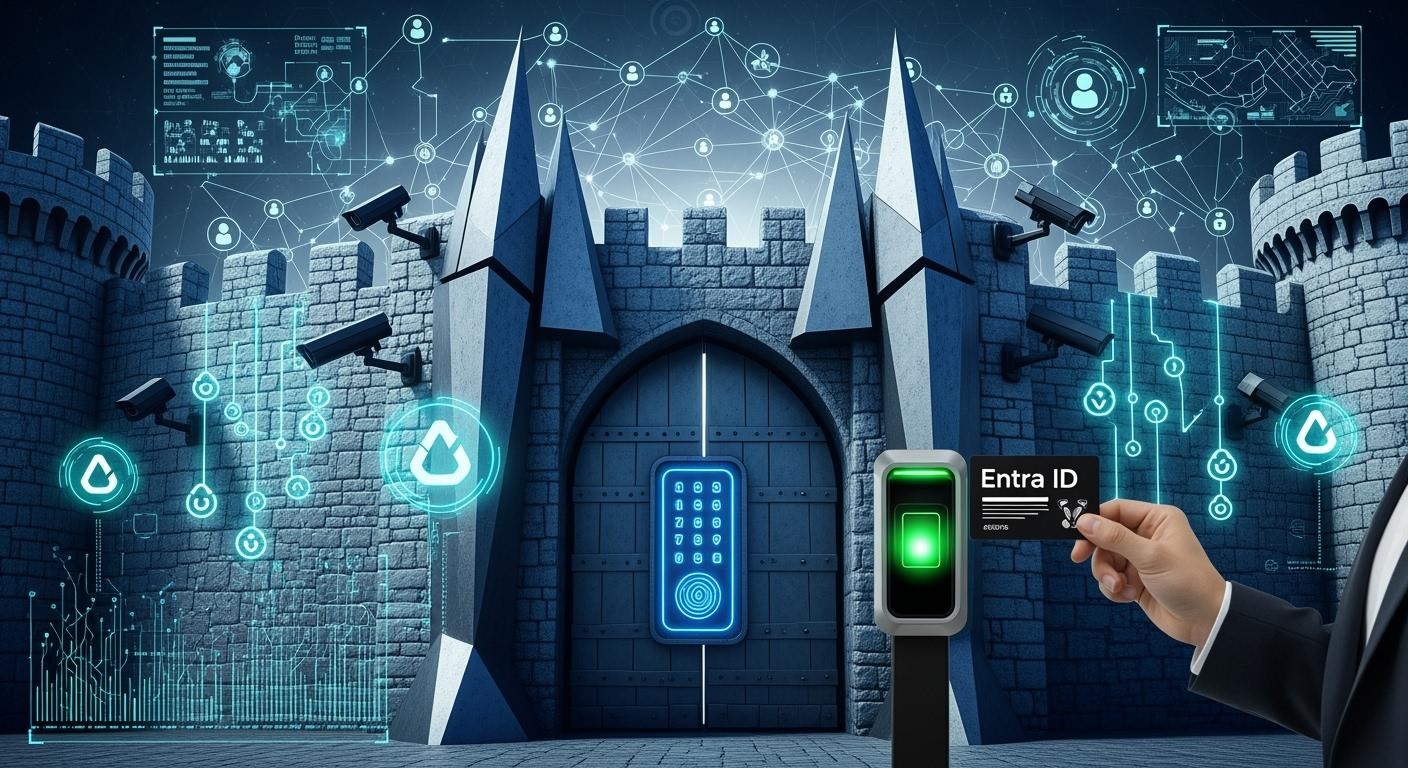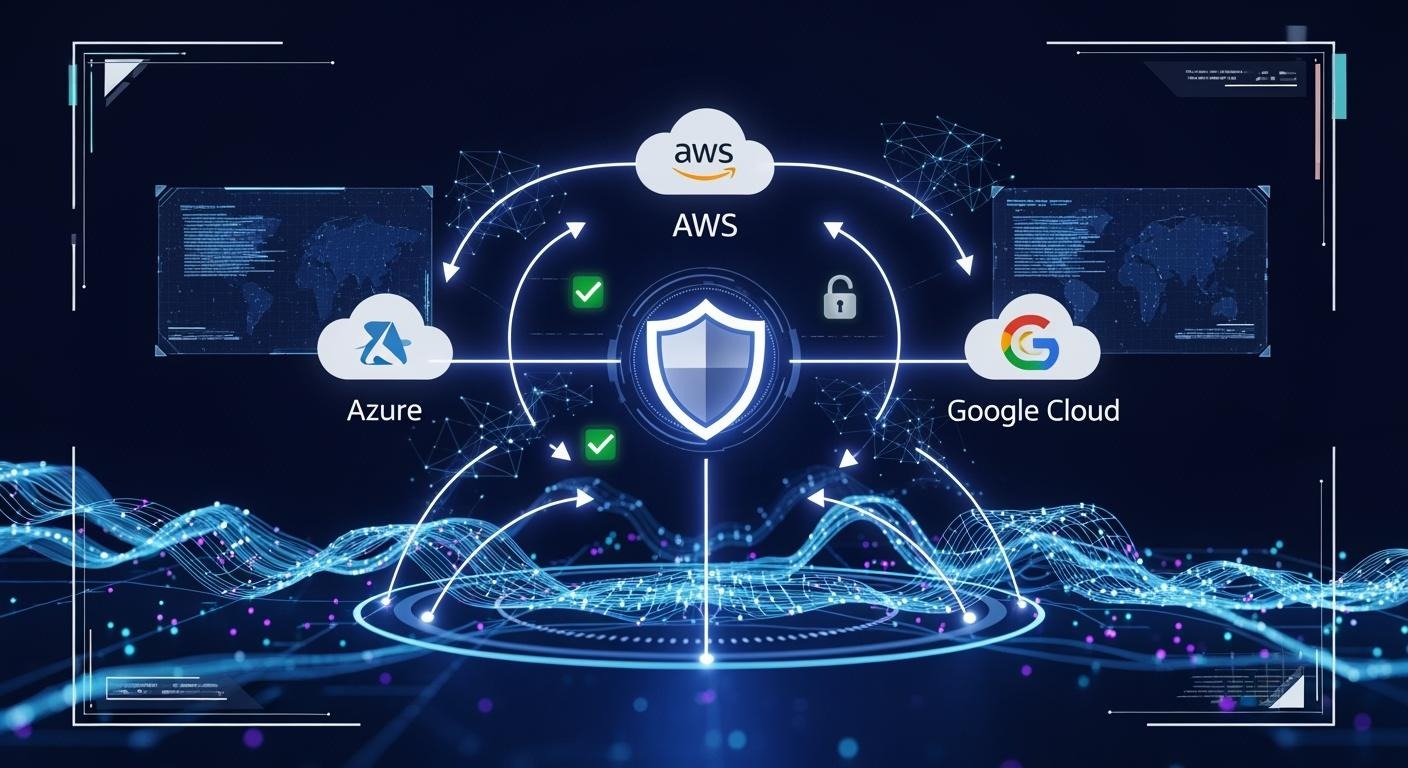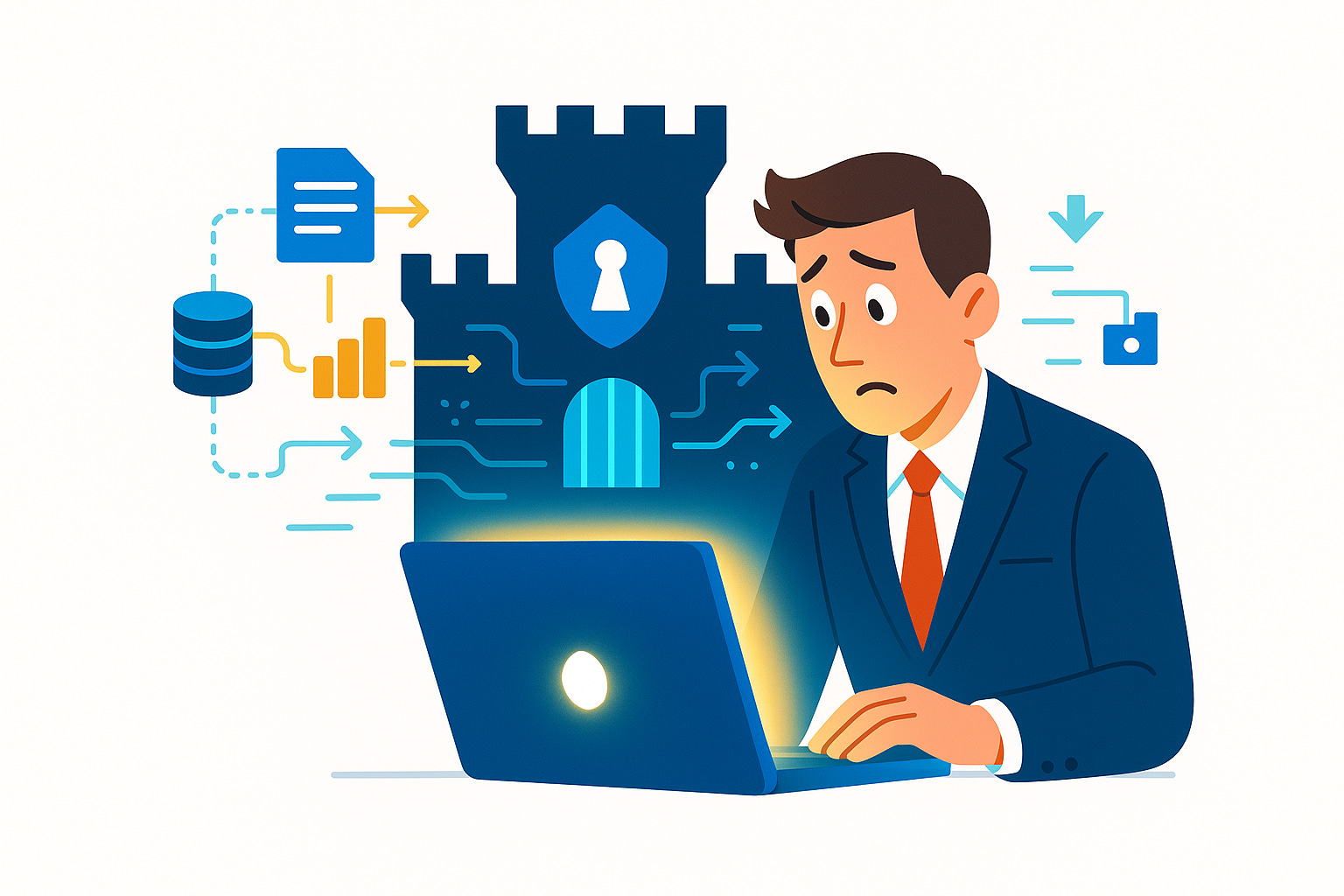The Castle Gate Is Identity: How to Truly Secure Your Entra ID

Imagine your organization's security is like a castle. The Castle Gate is strong. Attackers do not climb the walls anymore. They just log in if your defenses are weak. Almost 60% of cloud threats use stolen or misused identities.
-
Attackers go after weak passwords and accounts set up wrong.
-
They take advantage of trust between on-premises and cloud systems.
|
Time Period |
Increase in Identity-Based Attacks |
|---|---|
|
Past Six Months |
Recent attacks use smart new tricks. Threat actors search for weak spots in hybrid setups and open endpoints. They try to pretend to be users and steal access. You need to make identity your main defense to keep bad people out.
Key Takeaways
-
Identity is your best way to stop cloud threats. You must guard your Castle Gate to keep bad people out.
-
Use Multi-Factor Authentication (MFA) for everyone. MFA stops more than 99% of account break-ins.
-
Use Conditional Access to check every sign-in. Make rules based on risk, where someone is, and their job.
-
Use Privileged Identity Management (PIM) to limit admin access. Give permissions only when needed to lower risk.
-
Check and change your security rules often. Make sure only the right people can get into your systems.
The Castle Gate Metaphor in Cloud Security
From Moat and Walls to Identity Gatekeeper
People used to keep networks safe like a castle. The moat and walls stopped attackers from getting in. Firewalls and VPNs acted like strong barriers. But these do not work well for cloud threats now. Remote work and BYOD changed how things work. Now, the Castle Gate is your main protection. Attackers do not break down walls anymore. They look for weak identity controls and try to log in.
Zero Trust changes how you protect things. You must check every user, device, and action before letting them in. You cannot trust someone just because they are on your network. You need to check who they are every time.
Here are the main ways traditional and identity-based perimeters are different:
-
Traditional perimeters use network defenses. Identity-based perimeters protect user accounts.
-
Zero Trust means you check users and devices all the time. Old ways trusted users after they logged in.
-
You must check every action. Trust does not come from being inside the network now.
Why Attackers Target the Gate
Attackers know the Castle Gate is the key to your cloud. They use many tricks to get past it. Identity-based attacks happen more each year. In 2024, these attacks were 60% of cyber incidents. Threat actors use AI to make fake messages and deepfakes. They target identity providers in the supply chain. Attackers also use real tools to move around without being noticed.
Common ways attackers use weak identity controls:
-
They steal cookies to get into cloud accounts.
-
They abuse OAuth consent to get permissions.
-
They find misconfigured service principals for secret entry points.
-
They use long-lived keys to stay hidden for months.
Attackers often act like real users. They use living-off-the-land tricks to blend in. If you do not protect the Castle Gate, attackers can get into everything in your cloud.
Passwords—Rolling a Natural 1
Password Weaknesses and Attack Tactics
You might think a password is a strong lock on your castle gate. In reality, most passwords are more like rolling a natural 1 in a boss fight—an automatic fail. Attackers know this. They use simple tricks to break in. Many people reuse passwords across different sites. Attackers collect these passwords from old breaches and try them everywhere. This is called credential stuffing.
Phishing is another common attack. You get an email that looks real. You click a link and enter your password. The attacker now has your key. Attackers also use brute-force tools. These tools guess thousands of passwords every minute. If your password is weak or common, it will not last long.
Tip: Long, unique passwords are better, but even the best password can be stolen or phished.
Attackers do not need to break down the walls. They just log in with stolen credentials. If you rely only on passwords, you leave the castle gate wide open.
MFA as the First Real Lock
You need a better lock on your gate. Multi-factor authentication (MFA) adds a second layer. Now, even if an attacker steals your password, they cannot get in without your phone or another factor. This stops most attacks cold.
-
MFA can block over 99.2% of account compromise attacks in Microsoft Entra ID deployments.
-
Attackers often give up when they see MFA is required.
You can set up MFA with an app, a text message, or a hardware token. Choose the method that works best for your users. Make MFA required for everyone, not just admins. The more people use MFA, the stronger your castle gate becomes.
Remember: Passwords alone are not enough. MFA is your first real lock. Do not wait for a breach to roll initiative—secure your gate now.
Smart Guards and Strong Keys for Entra ID
Conditional Access as the Judgment Layer
You need more than a lock on your Castle Gate. You need a smart guard who checks everyone before letting them in. Conditional Access works like this guard. It looks at each sign-in and decides if the user should get access. You can set rules based on risk, location, device, and user role. This stops attackers who try to sneak in with stolen credentials.
Conditional Access policies help block threats and stop unwanted access. Here are some good ways to use these policies:
-
Block legacy authentication to stop old, unsafe sign-ins.
-
Require MFA for risky sign-ins to add extra protection for strange activity.
-
Allow access only from compliant (Intune-managed) devices to make endpoints safer.
-
Restrict access by location or IP range to control sign-ins from trusted networks.
-
Apply stricter policies for admin accounts to protect important users.
You can also protect your Conditional Access policies. For example, you can set up authentication contexts so only Global Admins can change these policies. This keeps attackers from changing your defenses if they get in.
Conditional Access is not just a guard. It is a wise judge who knows when to let someone pass and when to raise the alarm. Use it to make sure only the right people get through your Castle Gate.
Privileged Identity Management (PIM)
Admin accounts are like skeleton keys. If attackers get one, they can open every door in your castle. Privileged Identity Management (PIM) helps you protect these powerful keys. PIM gives just-in-time access to admins. This means admins only get special permissions when they need them. After they finish, their extra access goes away.
Here is how PIM reduces risk:
|
Evidence Description |
Key Benefit |
|---|---|
|
Just-in-Time (JIT) access prevents persistent administrative permissions. |
Reduces the risk of unauthorized access after credential compromise. |
|
Permissions automatically expire after activation or can be manually deactivated. |
Ensures that privileged permissions do not remain active beyond operational need. |
|
Organizations with standing privileged roles face extended exposure windows. |
Limits the attack surface and reduces potential for privilege escalation and lateral movement. |
With PIM, you can require approval before someone gets admin rights. You can also review who used admin access and when. This makes it much harder for attackers to move around if they get inside. You turn your skeleton keys into time-limited passes, making your castle much safer.
Secure SSO and Centralized Control
Single Sign-On (SSO) lets users log in once and use many apps. This makes life easier for your team and safer for your organization. With SSO, you reduce the number of passwords people need to remember. This lowers the risk of password theft and phishing.
Centralized control gives you power over all your apps from one place. You can set security rules, enforce MFA, and manage access quickly. Here are some key benefits of secure SSO and centralized control:
-
Centralized authentication means users enter passwords less often, which lowers the chance of credential theft.
-
Adding MFA at the login screen gives every app an extra layer of security.
-
One secure login point makes it easier to manage users and control access.
-
Automated incident creation helps you respond to threats faster.
-
Better alerts and user context help you investigate problems quickly.
You can also use secure protocols like SAML 2.0 for password-less authentication. This makes your login process both strong and simple. When you use SSO with centralized control, you build a strong defense that covers every door in your castle.
Tip: Check your SSO setup often. Make sure only the right people have access to each app. Remove old accounts and update your policies as your needs change.
By using Conditional Access, PIM, and secure SSO, you turn your Entra ID into a true stronghold. You give your Castle Gate smart guards, strong keys, and a watchful eye over every entry point.
Entra ID Hardening Checklist
MFA for All Users
You should protect every account with multi-factor authentication (MFA). This stops attackers who steal passwords. When you use MFA, users must show who they are in two ways. They use something they know and something they have. You can pick apps, text messages, or hardware tokens.
Many groups have problems when they turn on MFA. Some users get logged out a lot. Automation and DevOps pipelines may break because of MFA prompts. Old apps sometimes do not work with token-based authentication. You need to plan for these problems and help users get used to changes.
|
Challenge Description |
|---|
|
Users get logged out often instead of staying signed in. |
|
Non-interactive logins fail MFA, so conditional access keeps asking. |
|
Automation breaks because MFA prompts stop DevOps and data pipelines. |
|
Old apps have trouble with token-based authentication. |
|
Policy problems happen when conditional access includes service accounts. |
You should make users sign up for MFA. This lowers the chance of accounts getting stolen. Security experts say you should turn on self-service password reset (SSPR). This lets users fix their own passwords.
Block Legacy Auth and Baseline Policies
Old authentication methods do not work with MFA. Attackers go after these old ways because they send passwords in plain text. New authentication uses encryption and lets you set detailed permissions. You need to block old authentication to keep things safe.
|
Security Feature |
Legacy Authentication |
Modern Authentication |
|---|---|---|
|
No |
Yes |
|
|
Credential Transmission |
Plaintext |
Encrypted |
|
Access Permission Granularity |
Limited |
Granular |
Turn on baseline security policies to stop common attacks. These rules make users use MFA, block old protocols, and ask users to sign up for MFA. When you use security defaults, you can see up to an 80% drop in stolen accounts.
Zero Trust Alignment
Zero Trust means you never trust anyone right away. You always check users and devices before letting them in. You need strong identity and access management. Conditional Access looks at user details and risk before letting people in.
Zero Trust stops attackers from moving around your network. They cannot go anywhere they want. You split your network and control how traffic moves. You keep data, apps, and endpoints safe with strong checks and watching all the time.
Your Castle Gate stays strong when you match Entra ID with Zero Trust. You lower risk and keep attackers out.
You need to make identity your main shield. The Castle Gate keeps your cloud safe now. Attackers go after identity systems because most breaches use stolen credentials. More than half of groups say they have had identity attacks. If Entra ID is weak, you could face these problems:
|
Consequence |
Description |
|---|---|
|
Unauthorized Access |
Attackers can get admin rights and sneak around. |
|
Data Breaches |
Important data can be taken or changed. |
|
Financial Losses |
Attacks can cost a lot of money. |
|
Lack of Audit Trail |
You might not see attacks until it is late. |
Start protecting Entra ID right away:
-
Look at your permissions.
-
Make a Conditional Access rule with passwordless MFA.
-
Give out protected actions.
-
Try out your rules.
Check who can sign in and how they do it. Act now to keep your cloud safe.
FAQ
What is Microsoft Entra ID?
Microsoft Entra ID is a service in the cloud. It helps you manage user accounts. You can control who gets access. It protects your group’s data. It uses strong security to keep attackers out.
Why should you enable MFA for all users?
MFA adds another layer of safety. It stops most attacks with stolen passwords. Attackers have a hard time logging in as your users.
Tip: Begin with admins and important accounts. Then add MFA for everyone.
How does Conditional Access improve security?
Conditional Access checks every sign-in. You set rules for risk, location, or device. Suspicious logins get blocked. Trusted ones get allowed. You decide who gets past your castle gate.
What is Privileged Identity Management (PIM)?
PIM lets admins get special access only when needed. You limit how long someone has strong permissions. This lowers the chance of attackers using stolen admin accounts.
How do you block legacy authentication?
You turn off old sign-in ways in Entra ID settings. Attackers cannot use weak protocols. Only secure, modern authentication is allowed.




















